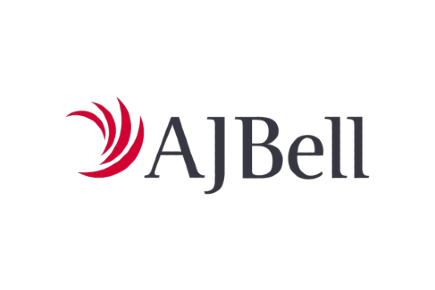Compare the best SIPP (self-invested personal pensions) platforms and providers in the UK and get exclusive new accounts offer.
SIPPs (self-invested personal pensions) are a type of pension that gives you greater control over how your retirement savings are invested. There are lots of different SIPPs on offer from many providers, so you are likely wondering: who is the best SIPP provider in the UK?
In short: The best SIPP providers for UK pensions are Interactive Investor (or ii), AJ Bell, PensionBee, Fidelity and Penfold to name a few. You will find these SIPP providers are easy to open an account with and have a good range of options for your pension. We at Investing Reviews also keep our ear to the ground, where we would bring you new comers such as InvestEngine SIPP to you.
While my list will provide you with a brief overview of the costs and investment choices of the best SIPP providers in the UK, I suggest you read the whole of this guide as there are other considerations that may affect your choice of SIPP provider.
Also consider: My guide to the pros and cons of investing in SIPPs
Top 10 SIPP providers for September 2025
If you want to use a SIPP with a flat fee structure, then interactive investor could suit you. They offer 2 Pension plans: Pension Essentials and Pension Builder. The basic plan costs £5.99 per month which suits investors or savers who have under £50,000 in a SIPP. If you hold more than £50,000, you can join their Pension Builder plan which would cost £12.99 per month. Both plans offer funds, stocks, ETF as well as free regular investing.
If you are already an existing ISA or Trading Account (GIA) customer, you can add SIPP for an extra £5 a month or £10 a month depending on the existing plan.
Better yet, the trading fees on interactive investor’s SIPP are relatively low—you will only be charged between £3.99 for buying and selling UK/US shares.
These flat fees are highly reasonable if you have a large pension pot, as you won’t face excessive percentage fees as the value of your SIPP (retirement saving) grows.
Capital at risk.
PensionBee does pensions and nothing else. So it stands to reason that the pension service you get here will be second-to-none.
The first part of their service involves consolidating all your existing pensions. This is especially useful if you have changed jobs more than once and are likely to have multiple workplace pensions as a result.
However, PensionBee is also a solid choice for those looking to set up a new pension. Fees are fairly low for this type of proposition at 0.50%–0.95%, although you will find providers like AJ Bell and Fidelity cheaper. There are nine pension plans to choose from, which is plenty for investors with limited knowledge.
Capital at risk.
InvestEngine is well known for being the lowest-cost platform for ETFs. They constantly expand their ETFs and now investors can access over 690 ETFs. In addition, they also offer DIY and managed portfolios to suit investors’ needs. It is a perfect platform if investors are looking for a simple solution.
Their wide range of funds includes global indices, ESG, Thematics, Emerging markets, commodities, energy, technology, healthcare, etc., and you will find partners such as Invesco, J.P. Morgan, Vanguard, iShares, etc. Investors will certainly not run out of choices.
Another thing I like about the InvestEngine platform is its ease of use. Opening an account is quick and easy. I would only say to have your NI number ready if you are opening an ISA or SIPP account.
In 2024, they launched SIPP (Self-Invested Personal Pension). Although at a glance, their 0.15% account fee capped at £200 a year seems a great proposition. But the fact that InvestEngine only offers ETFs, you might find that the likes of AJ Bell (max £10 per month for ETFs), Fidelity (capped at £90 for ETFs), Hargreaves Lansdown (capped at £200 for ETFs), Free Trade (under their plus plan £9.99 per month) or even interactive investors (Pension Essential plan £9.99) could be a better alternative.
Furthermore, if you choose to include a managed portfolio in your mix, then there would be an additional 0.25% charge.
Lastly, if you want a simple platform to invest in ETFs, then InvestEngine would be the right choice for you.
With investment, your capital is at risk. This could mean the value of your investments goes down as well as up.
AJ Bell is one of the UK’s largest investment platforms and was the first to launch an online SIPP in the UK in 2000. At 0.25% of your total pot, the AJ Bell SIPP platform fees are among the lowest out there for modest investment pots.
However, remember that a percentage fee of this nature can be expensive for larger pots. In addition, the share dealing fees of £4.95 to £9.95 are on the expensive end of the scale, so this wouldn’t be the best option for those that intend to buy and sell shares on a regular basis.
Where AJ Bell does excel is with its huge offering of assets you can invest your retirement funds into, with a plethora of stocks and shares across more than 20 markets and over 2,000 funds, ETFs, and bonds to choose from.
AJ Bell also offers a junior SIPP, which you could use to start building a retirement fund for your children.
Capital at risk. Pension rules apply
Penfold markets itself as the ideal solution for self-employed people, claiming they can set you up with a pension in around 5 minutes. The strength here lies in the flexibility of the pension, which can be adapted to suit changes in your income at any time.
Like PensionBee, Penfold also provides a consolidation service so you can gather all your pensions in one, easy-to-manage place. However, the price you will pay to keep your pension with Penfold is higher at 0.75%, reducing to 0.4% for pots over £100,000.
Capital at risk.
Fidelity, the financial planning and investor resource company, also offers a SIPP. If you’re looking for a pension with low minimum deposit requirements, then Fidelity could be for you. When you first open an account, you’re only required to deposit £25 a month or a lump-sum deposit of £1,000.
One thing you should note about Fidelity’s SIPP is its percentage-based fee structure. Typically, you’ll be charged anywhere between 0.2% and 0.35% on the total value of your SIPP. Fidelity is also highly competitive when it comes to fund fees, with only a small management charge and zero charges for buying and selling funds.
Fidelity is a great option if you are looking for a wide range of investment options and guidance on how to choose your investments.
They also offer a junior SIPP for your children, and better yet, there is no service fee for junior SIPPs.
Capital at risk.
Another fantastic SIPP provider in the UK is Freetrade. When you open a SIPP with Freetrade, you will face a flat fee of £9.99 a month for holding your account, though if you’re a Freetrade Plus member, this is reduced to £7 a month.
This is relatively low-cost when compared to other SIPP providers on my list. And, since you aren’t paying a percentage-based fee, this SIPP could be ideal for you if you have a large pension pot.
Better yet, there are absolutely no fees for buying and selling shares to hold in your Freetrade SIPP. This could make it a useful choice for you if you’re planning on trading a large volume of assets.
Capital at risk.
Who is the best SIPP provider?
There technically isn’t a “best” SIPP provider, as the right choice for you will depend on your investment strategy and needs.
For example, if you have a large pension pot, you may want to consider using a SIPP with fixed fees rather than a percentage-based fee. This way, you won’t face excessive charges on your retirement savings.
Or, if you have a smaller pension pot but would prefer to make large volumes of trades, then a SIPP with low trading fees may be ideal for you.
If you’re still not sure about which self-invested personal pension provider to choose, consider taking investment advice or independent financial advice from a financial adviser.
How to choose the right SIPP provider
Before deciding on a SIPP provider, you should first shop around and compare the different options.
You should closely examine your investment strategy and retirement goals and figure out which SIPP would best suit you. You will need to consider the fees, charges, and investment options available in order to ascertain which SIPP is best for your requirements. Note that the providers I have listed here are all regulated by the FCA.
Fees
It is important to look for ways to reduce the costs of holding your pension, as these can start to erode away at your gains. Large pension pots may well benefit from a flat fee structure, such as you would find at Freetrade, whereas small pension pots will fare better with a percentage fee, such as you would find at Vanguard.
Investment options
The purpose of a SIPP is to provide greater freedom over how your pension fund is invested. Therefore, it is important that the platform you choose has investment options that suit your experience.
Less experienced investors would benefit from managed funds, where they can take more of a back seat when it comes to managing their investments. PensionBee and Moneybox are both good options for investors who plan to set it and forget it. AJ Bell and Fidelity both offer a wide range of investment options for those who like to pick and choose their own assets.
Employment status
There are options on my list that would almost certainly be more suitable for those who are self-employed. This is because they offer the flexibility to adjust your pension savings in line with changes in your income. PensionBee and Penfold tick these boxes.
Features
Decide which features may benefit you. If you have multiple pension pots already in existence, then you may benefit from a pension consolidation service to bring them all together, such as you would find at PensionBee.
Those that struggle to save may benefit from rounding-up features such as those you would find at Moneybox.
Comparison table
Here is a snapshot of each of the providers I have recommended in order to make your selection easier.
| Platform | Platform fees | Cost for £10,000 invested | Investment options | Minimum investment amount | Features |
|---|---|---|---|---|---|
| AJ Bell | 25% | £25 per year | Stocks, shares and over 2,000 funds, ETFs, and bonds | £31.25 per month | Junior SIPP |
| Fidelity | 0.2% – 0.35% | £35 per year | Funds, shares, investment trusts and ETFs | £1000 lump sum or £20 per month | Lower service fee and relationship manager for pots over £250,000 |
| Freetrade | £9.99 per month | £119.88 per year | Thousands of UK and US stocks, ETFs, fractional shares | N/A | Consolidation service |
| interactive investor | £12.99 per month | £156 per year | Quick start funds, shares, funds | N/A | Free for first 6 months |
| Vanguard | 0.15% per month | £15 per year | 85 funds | £500 lump sum or £100 per month | Target retirement fund and pension calculator |
| PensionBee | 0.50%–0.95% per month | £50 per year | 9 pension plans | N/A | Pension consolidation service |
| Penfold | 0.75% | £75 per year | 4 funds | N/A | Flexible savings and consolidation service |
| Moneybox | 0.45% | £57 | 4 funds | £1 per month | Consolidation service, payday boosts, one off deposits, round-ups |
What is a SIPP?
A self-invested personal pension (SIPP) is a type of personal pension that gives you more control over how your retirement savings are invested.
In a SIPP, you can choose and manage your own investments, giving you flexibility in deciding exactly how your money is invested.
Compared to other forms of pension, a SIPP typically offers investors a wider range of different investment options.
Also consider: Best Pension Providers for Private Pensions
Investments that can be held in a SIPP
One of the fantastic things about a SIPP is the wide range of investment choices you have. It’s worth noting that not all SIPPs offer the same range of investments. So, before choosing a provider, you should ensure that it allows you to invest in your desired asset.
These investments vary from the standard to the more specialist, so keep reading my guide to find out exactly what you can hold in your SIPP investment portfolio.
Stocks and shares
Perhaps the first assets that come to mind when you think of investing are stocks and shares. This is when you essentially purchase a fraction of a stake in a company, so when you buy shares, you technically “own” a very small part of that company.
Businesses will typically issue shares in an attempt to raise funds to cover operation costs or finance new projects.
When you buy stocks and shares, you can either sell them for a profit if they increase in value, or you can hold them and rely on dividend payments, which are a regular income paid by some companies for holding their shares.
See also: My guide to Best Dividend Stocks UK
You should keep in mind that dividend yields vary from company to company, and some businesses don’t offer dividends at all. So, if you want to invest for an income, you should first ensure that the company you wish to add to your SIPP offers dividends.
Funds
Instead of investing in a single company, funds offer a method of investing in a wide range of businesses with a single investment.
Funds are a form of pooled investment that is overseen by fund managers. These fund managers will use the money from investors to invest in a wide range of assets, depending on the type of fund.
Even though you’ve only invested in a single asset, you technically gain exposure to all of the companies or assets that the fund invests in.
There are several different types of funds, each with its own benefits. This includes:
- Exchange-traded funds (ETFs)
- Investment funds
- Investment trusts
- Open-ended investment companies (OEICs)
- Collective investment schemes
Much like trading stocks and shares, you can either sell your stake in a fund for a profit if it rises in value, or hold it and rely on dividend payments.
If you aren’t as confident making your own investment decisions, then a fund could be a useful investment for you. This is because, since funds are managed by financial experts, they typically know the best ways to invest your money.
Gilts and corporate bonds
One avenue for investment that you may not have initially considered adding to your SIPP is bonds.
Bonds are a type of financial instrument issued by a government or business. You can typically purchase gilts and corporate bonds. Gilts, or treasury bonds, are issued by a government in an attempt to raise money for public works. Meanwhile, a corporate bond works similarly, but for businesses instead.
If you purchased a bond, you would technically be “loaning” money to the issuing agency. The borrower can then use the money raised from the sale of bonds on planned projects.
After purchasing your bond, you’ll typically be paid regular interest at a pre-agreed rate, which is called the “coupon”, until the bond matures.
Then, when your bond reaches its maturity date, you’ll usually be paid back the amount of money you initially invested.
Property
Perhaps the most surprising asset you can add to your SIPP is property, giving you the chance to diversify your portfolio even further. While this tends to be commercial property, you can also invest in residential property if it’s through a Real Estate Investment Trust (REIT).
Investing in property through your SIPP is tax-efficient; you typically won’t face Income Tax or Capital Gains Tax (CGT) once the property is in your SIPP. When the property you’ve invested in rises in value, you can sell it much like any other asset held in your SIPP.
Get a FREE Pension Review
Get a free no obligation pension review today from a qualified financial adviser.
Our partner Unbiased will connect you with one of over 27,000 FCA-regulated advisers.
The different types of SIPP
As well as having a wide range of investment options, there are also different types of SIPPs. Each has its own set of benefits and downsides, and one type of SIPP may suit you better than others.
Keep reading to discover the types of SIPPs on offer to help you decide which would best suit your retirement needs.
Full SIPPs
A full SIPP will typically offer you a much wider range of different investments compared to other types of SIPPs.
If your reason for investing your retirement savings in a SIPP is for greater control over how your pension pot is invested, then a full SIPP could be for you. The provider will typically give you information and help administer your SIPP, but you are completely responsible for your investments held in a full SIPP.
While they do offer more control over your investments, it’s worth noting that full SIPPs do tend to have higher fee structures when compared to other types of SIPPs.
Simple SIPPs
A simple SIPP, which is commonly referred to as a “low-cost SIPP”, is similar to a full SIPP, except it typically offers fewer investment options. Despite this, you’re still responsible for your investments, as the provider will not manage them for you.
As a counter to the smaller range of investment choices, you may find that simple SIPPs are typically cheaper than their full counterparts.
Ready-made SIPPs
Meanwhile, some providers may offer a ready-made SIPP, in which the investments have already been chosen by the provider.
The provider will typically give you the choice between a number of small, ready-made portfolios depending on your investment goals, but this is essentially the extent of your control over how your retirement savings are invested.
If you aren’t as confident making your own investment decisions or would rather be less hands-on when it comes to investing for your retirement, then a ready-made SIPP could be more suitable for you.
SIPPs vs private pensions
SIPPs are very similar to private pensions. Though, unlike a typical private pension, a SIPP gives you greater control over how your money is invested, offering an additional level of flexibility.
Also, a SIPP tends to offer investors a much wider range of investment choices, including specialist assets such as commercial property that usually wouldn’t be available in standard private pensions.
This means that a SIPP could be an effective choice for saving towards retirement if you’re an experienced investor and know what you’re doing. Though if you aren’t as confident making your own investment decisions, then another form of private pension may better suit you, as the investments held in them are typically picked and managed by the provider.
Low-cost SIPPs vs regular SIPPs
When it comes to choosing your SIPP, you have two main options: full SIPPs or low-cost DIY SIPPs.
The low-cost variety of DIY SIPPs tends to have a smaller range of investments available to you, though they usually have lower fee structures. Meanwhile, a full SIPP typically has a much wider offering of investments in return for higher fee and charge requirements.
If you’re a confident investor and wish to purchase more specialist assets, such as commercial property, then a full SIPP could be preferable.
Though if you would prefer to invest in more common assets, such as stocks and shares, and don’t want excessive fees and charges eating into your retirement savings, then a low-cost DY SIPP could be the right choice for you.
How much can be paid into a SIPP each year?
When it comes to making pension contributions to your SIPP, you are typically restricted by two limits: the Annual Allowance and the Lifetime Allowance.
The Annual Allowance is the total amount you can tax-efficiently deposit into your SIPP each tax year. While you can go over this allowance, your contributions won’t be as tax-efficient if you do.
As of the 2023–24 tax year, the Annual Allowance is the lower of £40,000 or 100% of your annual income.
Then, you also have the Lifetime Allowance to be wary of. This is the total amount you can build up in your pension pots across your lifetime without incurring a tax charge when you come to withdraw your funds. As of the 2023–24 tax year, this stands at £1,073,100.
SIPP tax relief
SIPPs come with valuable tax benefits and are considered to be highly tax-efficient. Indeed, as well as sheltering your investments from Income Tax and Capital Gains Tax (CGT), you are also entitled to Income Tax relief.
This is when the government tops up your SIPP contributions, depending on the value you contributed and your personal Income Tax rates.
For example, if you were a basic-rate taxpayer and contributed an £800 lump sum into your SIPP, then you would have technically made a £1,000 contribution overall. This is because the government would top you up with £200 of basic-rate tax relief on your contribution.
Meanwhile, higher-rate taxpayers would be able to claim an extra £200 on this contribution, while additional-rate taxpayers could claim back an additional £250. You must claim any tax relief above the basic rate through a self-assessment tax return.
It’s worth noting that tax relief is where the Annual Allowance comes into play; if you exceed your Annual Allowance on SIPP contributions, you typically won’t receive tax relief.
SIPP withdrawals
When you eventually reach retirement age and it’s time to withdraw from your SIPP, you have several different options to choose from.
You’ll typically be able to take the first 25% of your pension pot as a tax-free lump sum at age 55 (rising to 57 in 2028). But beyond this, you will need to decide how to take the rest of your pension funds, and depending on your retirement goals, some methods will suit you better than others.
Continue reading my guide to discover exactly how you can withdraw money from your SIPP, so you can decide which method would best suit you.
Buy an annuity
An annuity is essentially a product you purchase that guarantees you a set income for either the rest of your life or for a set period of time.
When you purchase an annuity, you hand your pension savings over to the annuity provider, after which they will calculate your average life expectancy.
Then, depending on the size of your pension pot and your estimated life expectancy, the annuity provider will provide you with a guaranteed monthly income.
It’s important to note that when you purchase an annuity, the transaction is irreversible, and it isn’t passed on to your next of kin when you die. For this reason, you should shop around for different annuities before purchasing one, as different providers will offer varying rates.
Flexi-access drawdown
You can also set up a flexible retirement income from your SIPP, which is commonly referred to as a “pension drawdown”.
This withdrawal method allows you to take your initial 25% lump sum tax-free and then leave the remainder invested. You can then draw the remaining sum as an income over a longer period of time.
After receiving your first 25% lump sum, the income you take from your remaining pension pot is typically subject to Income Tax rules.
See also: Best Performing Drawdown Pension Providers
Take it as one or multiple lump sums
As mentioned, when you first withdraw from your SIPP, you can take the first 25% lump sum tax-free. Though there’s nothing stopping you from taking the rest of your pension pot as lump sums.
It’s important to keep in mind that only the first 25% lump sum is tax-free. The rest will usually be subject to Income Tax at your marginal rate.
Get a FREE Pension Review
Get a free no obligation pension review today from a qualified financial adviser.
Our partner Unbiased will connect you with one of over 27,000 FCA-regulated advisers.
Best SIPP Provider FAQs
Is a SIPP better than a regular pension?
SIPPs technically aren’t better than regular pensions, as the “better” of the two depends on your investment goals. If you would like more control over how your retirement savings are invested and wish to gain exposure to a wider, more specialist set of investments, then a SIPP may better suit you.
However, if you aren’t as confident making your own investment decisions or wish to take a hands-off approach to your retirement savings, then focusing on a regular private or workplace pension may be for you.
What happens to a SIPP when you die?
When you die, your SIPP is typically passed on to your next of kin. Better yet, when your SIPP transfers to your beneficiaries, it’s typically free from inheritance tax.
Though, when your next of kin makes withdrawals from your SIPP, they will usually pay tax on it as income.
Are SIPPs safe?
Can a US resident open a UK SIPP?
Can you transfer a personal pension into a SIPP?
Please note
A pension is a long-term investment. The fund value may fluctuate and can go down, which would have an impact on the level of pension benefits available. Your pension income could also be affected by the interest rates at the time you take your benefits. The tax implications of pension withdrawals will be based on your individual circumstances, tax legislation and regulation, which are subject to change in the future.






